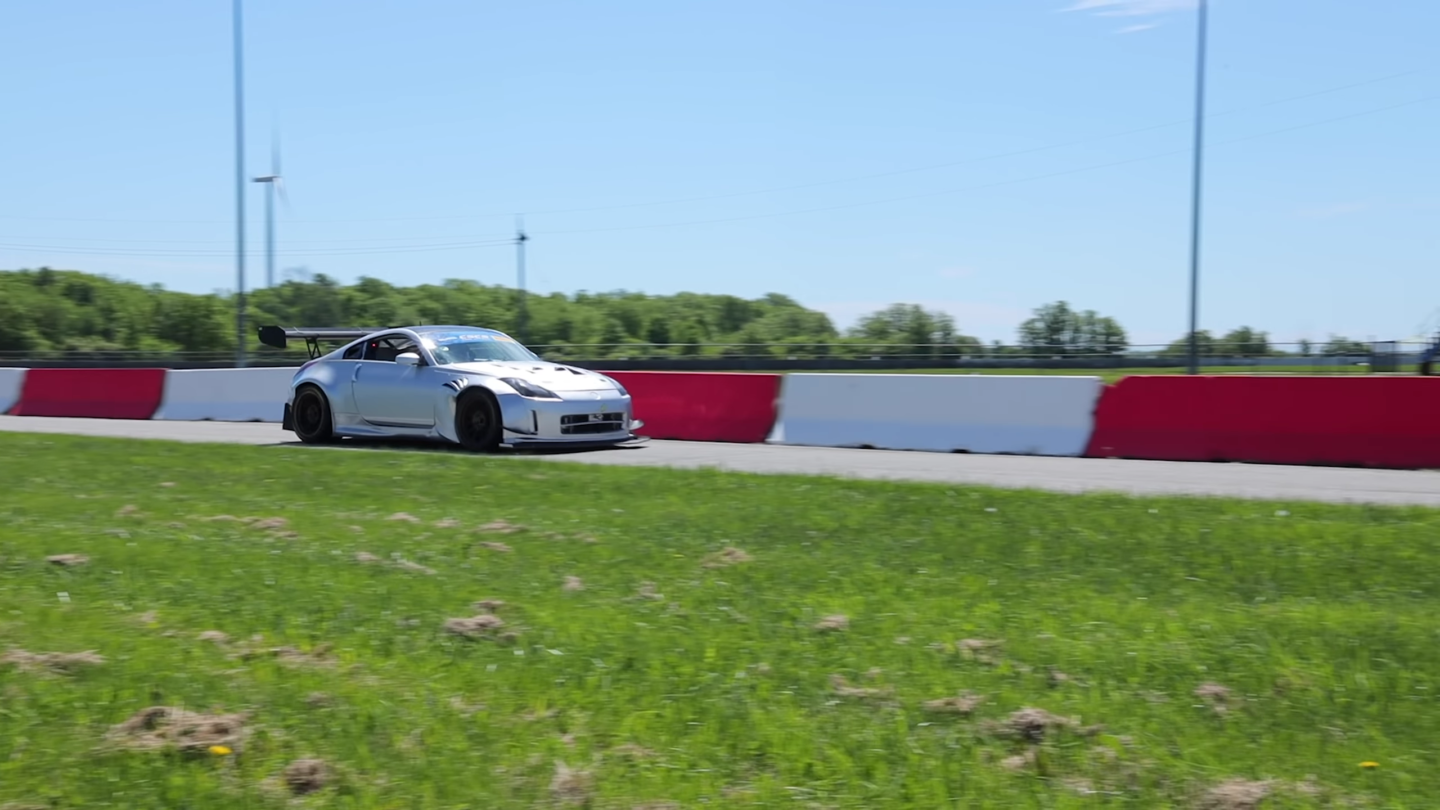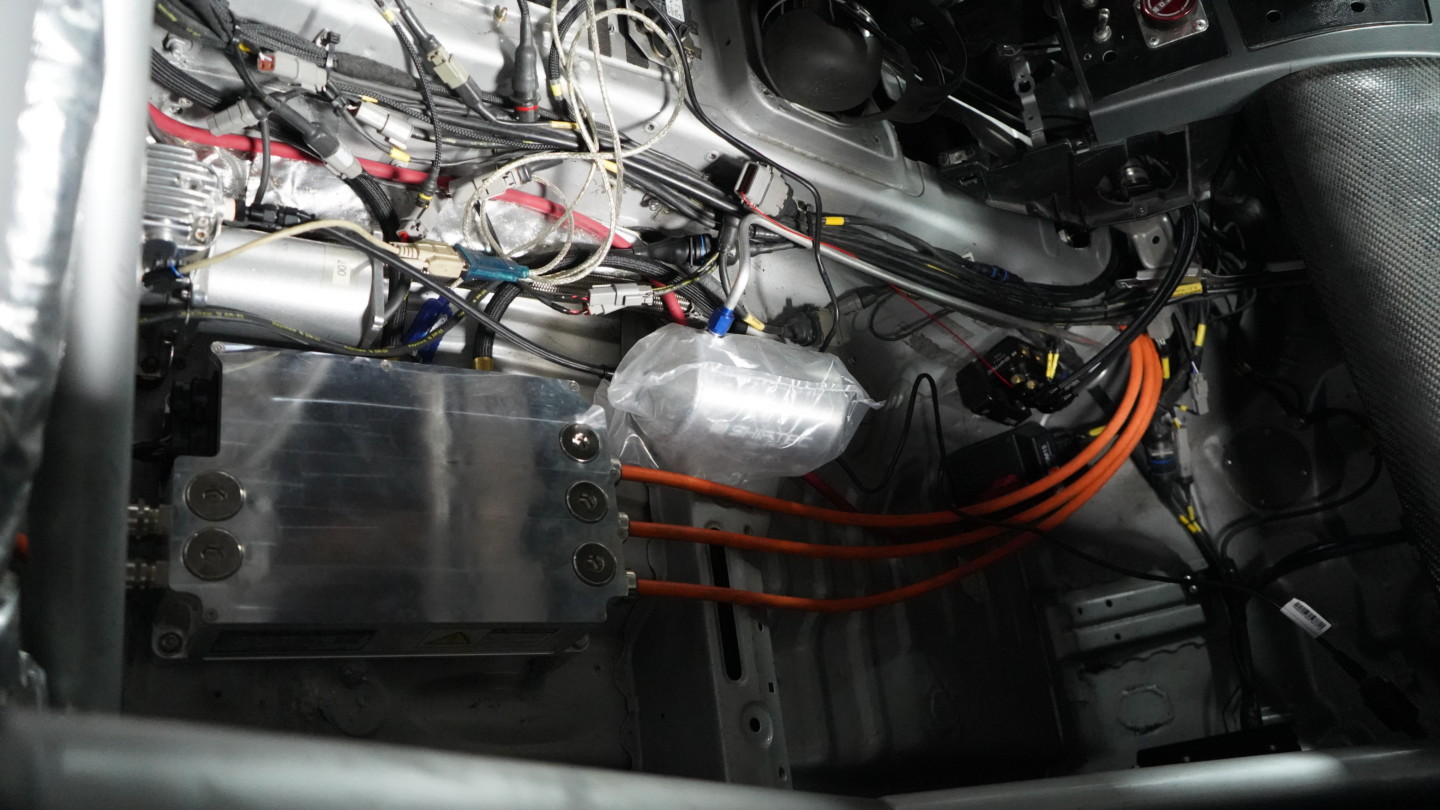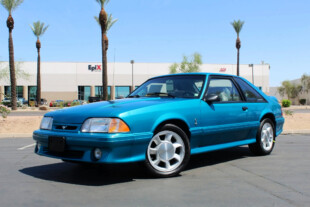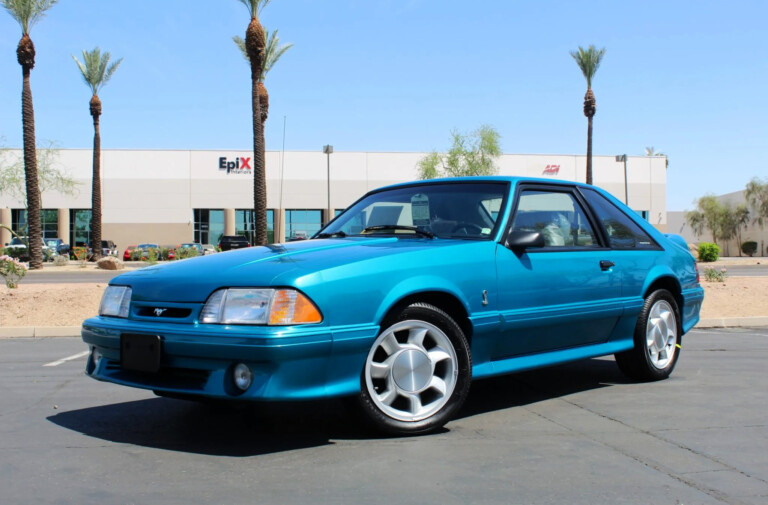Back in January, I alluded to the addition of a hybrid component to Sasha Anis’ unique powertrain. His 4.2-liter VQ, built with Jim Wolf Technology, is an absolute gem with a 9,000-rpm redline, an energizing soundtrack, and best of all—it’s still normally aspirated. The 537 rear wheel horsepower the engine produced helped Sasha snag a stellar 1:18 at Mosport; rivaling ALMS GT2 times. Now it’s been fitted with an electric motor from Formula E and the result is, well, you’ll see.
The powerplant now makes 750 crank horsepower, but in light of the other benefits this electric supplementation offers, it’s only one perk. The from-zip torque makes it more capable than some of the V8 cars he modeled this motor after, if not more so. Compared to the way this Grand-Am C6 Corvette launched off the very same corners at Toronto Motorsports Park, this hybrid Nissan looks far more responsive.
Even when the tires are warm, barely grazing the throttle pedal is enough to get the rears spinning. Mind you, it looks fast and controllable, but he’s always treating the rightmost pedal as if there’s an egg underneath it. Clearly, this thing isn’t designed for as tight a track and bumpy as TMP, but its manageable breakaway—a NISMO Pro GT LSD helps there—and unbelievable response make up for its shortcomings.

Sasha’s especially careful on his out laps, but it’s still quite easy to get this Z sideways with its newfound shove.
The extra power and the necessary cooling equipment caused a few issues. For one, getting power down is a little tricky as the rear Koni 2822 shocks are a little past their prime and the hopping is evidence of that. Evidently, the Stoptech ST-40 brakes could no longer handle the extra power, either. The upsides to these additions are: improved weight distribution, now shifted rearward with the new cooling equipment, as well as the ability to get better rotation into slower corners. Though the nose-heavy Z tended to understeer in slower corners prior to hybridization, Sasha can now tune that out by sending more of the regenerative braking force to the rear when the front axle isn’t cooperating.
Now, whether that added weight is outweighed by the increased power levels isn’t clear; there were too many variables to consider in this conservative shakedown. “Even so, we were within six tenths of what we did in last year’s Time Attack, and our tires this time were pretty old,” he added. Nevertheless, the cool, collected Sasha could write this off as a success. Though it was only a test session, the sound, balance, and response certify there’s an exciting future ahead for the first privately-built, hybrid-powered racing car in the world.
It gets better. There are plans for a more powerful electric engine and lighter battery packs. “Based on what we’ve seen, we’re feeling optimistic about our chances. Realistically, we should be able to go another second faster at TMP and probably two seconds faster at Mosport,” he concludes. He’s testing the first of those two circuits today, so we’ll keep our eyes out for the updates.
To learn more about the motor, read further here.
To learn more about the chassis, read further here.
























